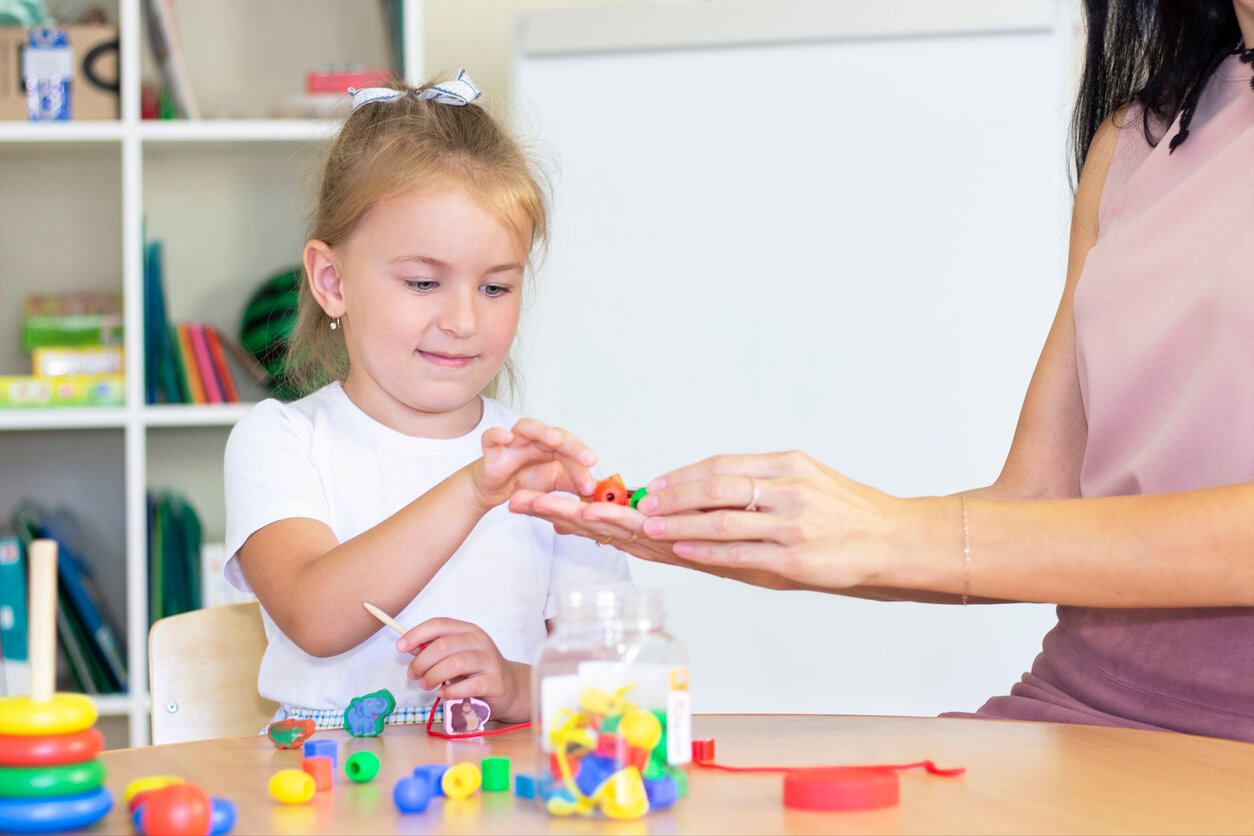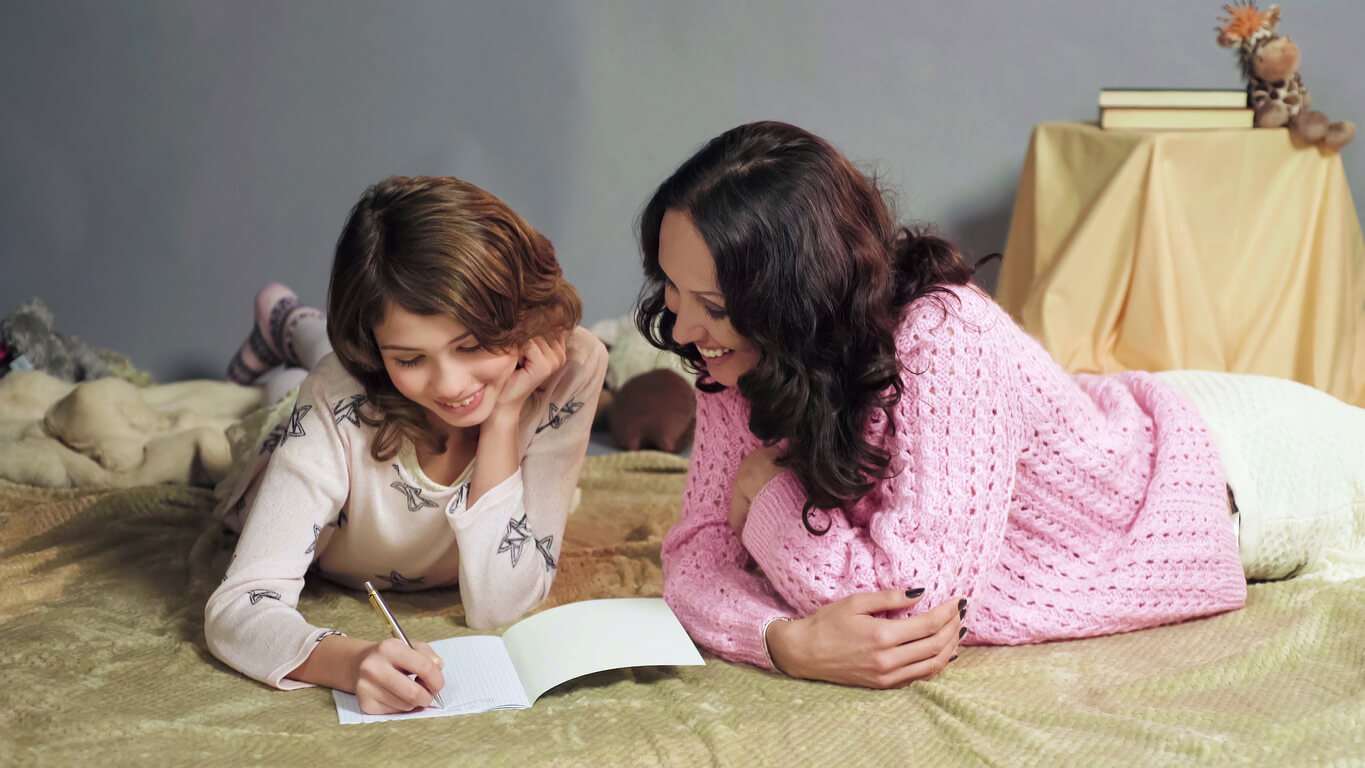5 Fun Exercises to Treat Dyslexia


Written and verified by the psychopedagogue María José Roldán
Until not so long ago, children with dyslexia had a hard time in school. Due to traditional teaching, they weren’t allowed to develop their abilities according to their skills and were expected to learn like everyone else. However, in reality, they just needed to have their rhythms respected. In this article, we’ll present 5 fun activities to treat dyslexia.
Dyslexia’s a learning disorder that’s directly related to literacy, that is, reading and writing. It falls into the category of what are known as SLDs (specific learning disabilities). A person with this diagnosis will have normal or above average cognitive development, without sensory alternations. Also, they’ll be observed as having learned to read and write normally, but suddenly begin to have lexical problems.
Activities for children to treat dyslexia
For all these reasons, we’re going to present you with some activities for children with dyslexia. We don’t intend for them to be complicated exercises, but to focus on activities that can be done from home. There’s also no need to spend a lot of money on materials. The most important thing is that the child’s motivated and interested in doing them.

1. Board games with letters
Some board games, such as Scrabble, or others such as word searches, crossword puzzles, word search in texts, word creation, or spelling greatly enhance the lexical development of children. Therefore, it’s a good option to sit down with little ones and engage in these types of games every day.
2. Laterality activities
Children with dyslexia often have laterality problems. Therefore, it’s important to do activities that reinforce it. To do this, you can do strength activities such as lifting heavy objects with one arm and then the other.
In addition, you can do precision activities such as sewing, passing buttons through small holes, or tying shoelaces, among others. At the same time, you can also play games to move the body, such as dancing or dividing the body in two and moving only the right or left area to the rhythm of the music.
3. Rhymes
Rhymes are a lot of fun if done right. They’re also very beneficial for all children. In this way, little ones will look up words and think in order to create very original texts if they’re allowed to explore their creativity and imagination. They can make rhymes with everyday things or with the names of friends or relatives.
4. Absurd words and phrases
On many occasions, absurdity can be fun and motivating. That’s why this type of exercise is good for children with dyslexia. For example, you can make up new words. To do this, you can create two different columns with pairs of words, one real and one made-up. Then, ask the child to choose one of them and guess which of the two is the one that doesn’t really exist.

5. Correct word recognition
Correct word recognition can also be a good opportunity to treat dyslexia so that a child’s reading and writing skills improve. In addition, the activity can be adapted according to the age of the child. The idea is that they should identify words and sentences that are actually spelled correctly and differentiate gender and number. Also, they should check the verb tense, nouns, and adjectives.
You can create a list of words so that the child can tell you the characteristics of each of them. That way, they’ll be able to detect which words and phrases are correct and which aren’t more quickly. You can also extend the activity and have them name synonyms for some words. Then, they can say what the plural or singular forms would look like.
Treat dyslexia through play
Fortunately, we now know what dyslexia is, and we know that we can help children improve their performance. Therefore, carrying out these proposed activities will be of great help in the treatment of the child. In addition, you can use whatever you consider necessary to make it more fun and, at the same time, more in line with the child’s age and abilities.
Also, it will be a good occasion to share quality time together with your child every day, through learning and entertainment.
Until not so long ago, children with dyslexia had a hard time in school. Due to traditional teaching, they weren’t allowed to develop their abilities according to their skills and were expected to learn like everyone else. However, in reality, they just needed to have their rhythms respected. In this article, we’ll present 5 fun activities to treat dyslexia.
Dyslexia’s a learning disorder that’s directly related to literacy, that is, reading and writing. It falls into the category of what are known as SLDs (specific learning disabilities). A person with this diagnosis will have normal or above average cognitive development, without sensory alternations. Also, they’ll be observed as having learned to read and write normally, but suddenly begin to have lexical problems.
Activities for children to treat dyslexia
For all these reasons, we’re going to present you with some activities for children with dyslexia. We don’t intend for them to be complicated exercises, but to focus on activities that can be done from home. There’s also no need to spend a lot of money on materials. The most important thing is that the child’s motivated and interested in doing them.

1. Board games with letters
Some board games, such as Scrabble, or others such as word searches, crossword puzzles, word search in texts, word creation, or spelling greatly enhance the lexical development of children. Therefore, it’s a good option to sit down with little ones and engage in these types of games every day.
2. Laterality activities
Children with dyslexia often have laterality problems. Therefore, it’s important to do activities that reinforce it. To do this, you can do strength activities such as lifting heavy objects with one arm and then the other.
In addition, you can do precision activities such as sewing, passing buttons through small holes, or tying shoelaces, among others. At the same time, you can also play games to move the body, such as dancing or dividing the body in two and moving only the right or left area to the rhythm of the music.
3. Rhymes
Rhymes are a lot of fun if done right. They’re also very beneficial for all children. In this way, little ones will look up words and think in order to create very original texts if they’re allowed to explore their creativity and imagination. They can make rhymes with everyday things or with the names of friends or relatives.
4. Absurd words and phrases
On many occasions, absurdity can be fun and motivating. That’s why this type of exercise is good for children with dyslexia. For example, you can make up new words. To do this, you can create two different columns with pairs of words, one real and one made-up. Then, ask the child to choose one of them and guess which of the two is the one that doesn’t really exist.

5. Correct word recognition
Correct word recognition can also be a good opportunity to treat dyslexia so that a child’s reading and writing skills improve. In addition, the activity can be adapted according to the age of the child. The idea is that they should identify words and sentences that are actually spelled correctly and differentiate gender and number. Also, they should check the verb tense, nouns, and adjectives.
You can create a list of words so that the child can tell you the characteristics of each of them. That way, they’ll be able to detect which words and phrases are correct and which aren’t more quickly. You can also extend the activity and have them name synonyms for some words. Then, they can say what the plural or singular forms would look like.
Treat dyslexia through play
Fortunately, we now know what dyslexia is, and we know that we can help children improve their performance. Therefore, carrying out these proposed activities will be of great help in the treatment of the child. In addition, you can use whatever you consider necessary to make it more fun and, at the same time, more in line with the child’s age and abilities.
Also, it will be a good occasion to share quality time together with your child every day, through learning and entertainment.
All cited sources were thoroughly reviewed by our team to ensure their quality, reliability, currency, and validity. The bibliography of this article was considered reliable and of academic or scientific accuracy.
- Silva, C. (2020) Método Diverlexia: Intervención psicopedagógica de la dislexia. Editorial: ladislexia.net
This text is provided for informational purposes only and does not replace consultation with a professional. If in doubt, consult your specialist.








